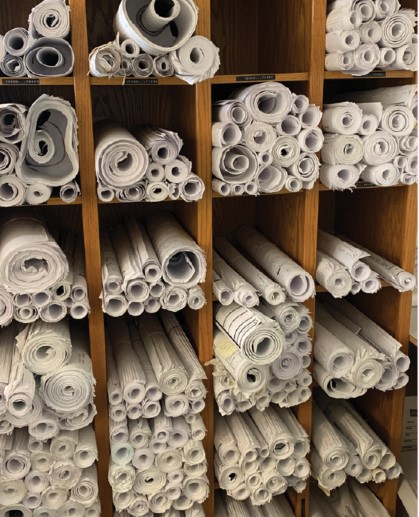Avoid the Papercut, Rather Cut the Paper
“Going paperless isn’t about eliminating paper 100 percent of the time,” says Greg Dahlstom of US LBM. “It’s about looking at all the ways software can help you manage your data, and choosing the areas where it can have the biggest impact.”

The contention is that paper has a lot of weaknesses. While it may sound obvious, data contained on paper can only be accessed if a person is holding that piece of paper. That means the data is disconnected from all related data and can only be interacted with through a physical connection to the paper. As a consequence, if the paper sitting in a pile on a desk in an office on the other side of the facility, accessing the data the paper contains is suddenly a very time consuming and inefficient activity.
Another limitation is that it can be very difficult to ascertain whether data contained on a piece of paper is the most recent iteration of that data. Do the paper plans your designer is working off of reflect all the most recent change orders from the customer? How do you know?
Data changes rapidly in the component manufacturing facility, whether it’s in the design department, on the manufacturing floor, or in shipping or accounts receivable. With paper, every change turns a piece of paper into waste. That waste adds up and represents true operational costs in the form of purchasing paper and printer ink, recycling, and all the labor associated with the movement of that paper through its life cycle.
Joe Noonan of Cascade Manufacturing says, “digital tools can’t solve everything, but there are several things a manufacturer can do easily that can immediately make an impact.” One tool is a QR code. These graphic squares harness the power of the most prolific technology in a component manufacturing facility: the cell phone camera. By using the camera to “scan” the QR code, a user can immediately access a website, video, document, or online form. “We put QR codes in several places throughout the facility to help employees quickly access the data they need to do their jobs and input data we need to improve the efficiency of our operations," says Joe.
Online forms is another digital tool component manufacturers (CMs) can easily leverage to gather important data. “Through a simple program like JotForms or Google Forms, you can quickly set up data collection on almost anything from safety near-miss incidents on the production floor to PPE use rates,” says Joe. Getting employees in the habit of using these simple digital tools can help companies set themselves up for success using more complex digital tools like centralized maintenance management systems (CMMS).
“Our CMMS is an incredibly powerful tool in helping us stay on top of preventative maintenance schedules and maintenance requests from the shop,” says Adam Finkenhoefer of 84 Lumber. “It also helps us track how efficient our maintenance department is and which equipment assets need the most attention.” Effectively using a CMMS requires extensive employee buy-in and commitment to its use, but offers a significant return on the investment in the form of increasing equipment uptime and knowing when its time to stop pouring resources into a particular piece of equipment.
Another powerful software tool is SBCA’s Digital QC program. Greg, Joe, and Adam all agree Digital QC is a significant improvement over the traditional paper-and-pencil approach to QC inspections. Not only does it avoid all the pitfalls associated with having QC data locked on pieces of paper, but it makes the actual inspection process faster and more intuitive. “It’s easier to train people to do inspections and the camera on the tablet combined with the software interface takes the guesswork out of the inspection,” says Greg. Further, all of the QC inspection data is immediately accessible by anyone in the company and can be quickly compared to historical data trends to identify if QC issues are either brand new or recurring and need to be addressed through targeted training or maintenance.
This gets to the heart of what may be most beneficial about moving away from paper and towards software-based solutions, digital data can quickly be aggregated to track trends and better understand aspects of the company’s operations, leading to better communication and decision making.
Going Paperless, Leveraging Digital Tools to Improve Your Business
Speakers: Adam Finkenhoefer, 84 Lumber, Joe Noonan, Cascade Manufacturing, and Greg Dahlstrom, US LBM
Moderator: Molly Butz, SBCA
